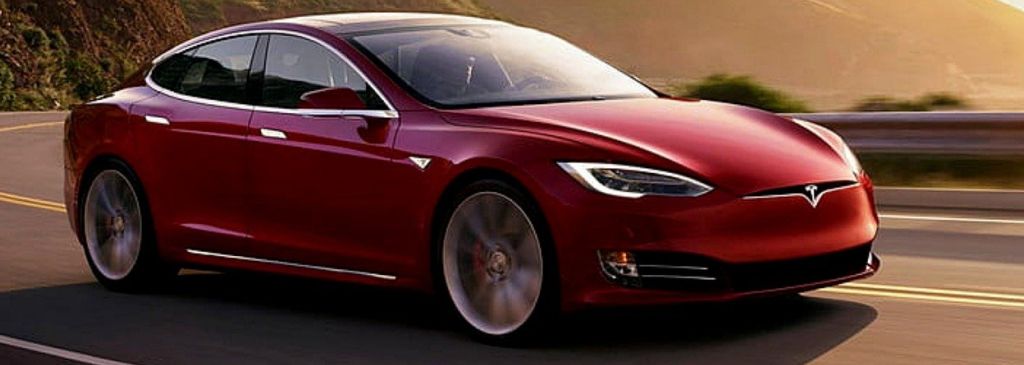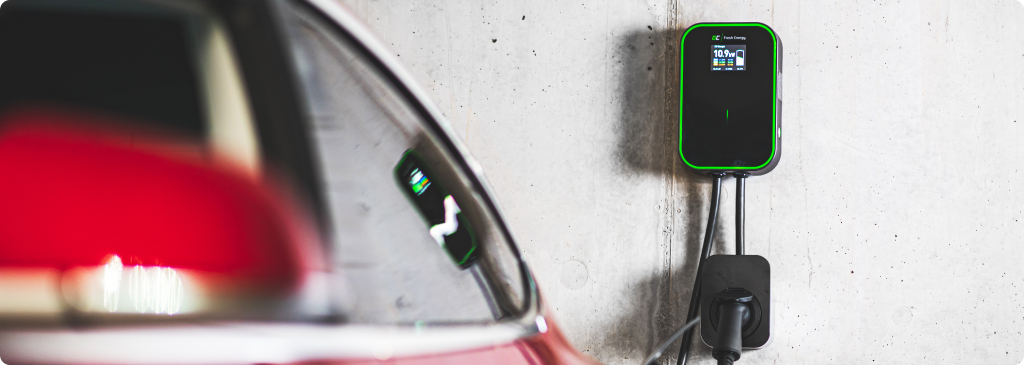Tesla is becoming increasingly popular in the segment of electric vehicles (EV). These Tesla cars – especially one of the S versions – are famous for their incredible acceleration. Plus, they can run a long distance on a single charge. But even if you go for a top notch vehicle, sooner or later you will have to recharge it. Discover all there is to know about charging a Tesla Car!
In this article you will find out:
- where you can recharge your electric vehicle,
- what are the available types of EV chargers,
- how long it takes to fully charge a Tesla Car.
Ways to charge an electric car
There are two basic ways to charge an EV.
The first one is to recharge the battery at home. This solution is rather convenient and time-saving – you don’t have to take the trouble to reach the charging station, because it’s enough if you plug your car for the night in order to enjoy a fully charged battery in the morning. EV users often choose to have a Wallbox charger in their garage.
Another charging method is using a public station. Such places are good when you’re on the road and need to recharge your car. If you want to use this solution, you should have your own EV cable – remember to keep it close at hand, preferably in your trunk. Don’t forget to pick the right plug and cable length to guarantee convenient use.

Tesla models
Tesla is an American brand of EVs. The company started out in 2003, when it was founded by Elon Musk. At the moment there are 5 models of EVs by Tesla:
- Roadster (2008),
- S (2012),
- X (2015),
- 3 (2016),
- Y (2020).
The production of the first model (Roadster) took 5 years and started in 2008. The car could boast the performance of many engine powered models, which instantly attracted lots of attention. The warm welcome Roadster received encouraged the manufacturer to start working on the next models.
At the moment, the most popular models by Tesla is the S, which comes in three variants: Standard Range Plus, Long Range and Performance. Standard Range will run 430 km on a single charge, the second model – 580 km, while the last one will cover the distance of 567 km. The Standard version has a rear wheel drive, while the other two come with a 4WD. The chassis of this vehicle is made of aluminium. Inside the car there are display screens for controlling additional functions. The vehicle also has a function known as Autopilot: it guarantees safe drive and proper acceleration, and if any other vehicles or pedestrians are detected on the road, it instantly brakes to stop the car.

Tesla charger
Most EVs come with a default charger, which can be plugged into a regular 230 V socket. But this is an option that requires considerable patience – this method of charging takes time (up to 12 hours). This option is recommended for cars with lower battery capacity and for people who normally use home or public charging stations. It’s a great alternative in the event of emergency – you can keep the device close at hand, in the trunk of your car.
A faster option is a Wallbox charging station. It’s a special socket mounted on the wall of a house – it is an interface between a regular socket and the charging cable plug. The power of Wallbox chargers can reach up to 22 kW. If you don’t have the time to recharge your Tesla battery with a regular Schuko outlet, opt for fast charging and choose the home station.
PowerBox Green Cell will be a great choice with its advanced electronics and the ability to monitor battery parameters. It can be used with model 3, X, S by Tesla and with other vehicles.

Tesla Car Model S charging time
Now you know about the possible EV charging options. One of these methods offers speedy charging, while the other one is readily available – which one to choose? It all depends on your preferences and priorities, especially as regards the charging time. The EV charging time depends on battery type, capacity and performance, but also on the charger and cable type. In order to help you choose the best option, we have come up with a comparison: see how the 75 kWh battery of Model S by Tesla is charged:
- 230 V socket (3.7 kW) – 21 hours,
- 230 V socket (7.2 kW) – 11 hours,
- charging station (22 kW) – 5 hours,
- charging station (50 kW) – 2 hours,
- charging station (150 kW) – 1 hour.
The difference in charging time is considerable – you can see the time ranges from 1 to 21 hours!
Summary
Remember that the cable and charger you choose must be compatible with your vehicle. If the accessories match your car, you will be able to charge the battery in you EV as fast as practically possible. Safety is the key, so always pick high-quality products by well-known brands. Explore the chargers available in Battery Empire!
Veronica Jones
Related posts
Most viewed entries
- Electricity in a camper van on holiday – a conundrum easily solve
- Off-grid installation on a plot. Is it worth it?
- Charging your electric car at home without a wallbox
- Inverter – what it is and what it is used for
- Zero VAT on energy storage in the UK possible soon
- Greece sets aside €200 million for photovoltaic subsidies!

